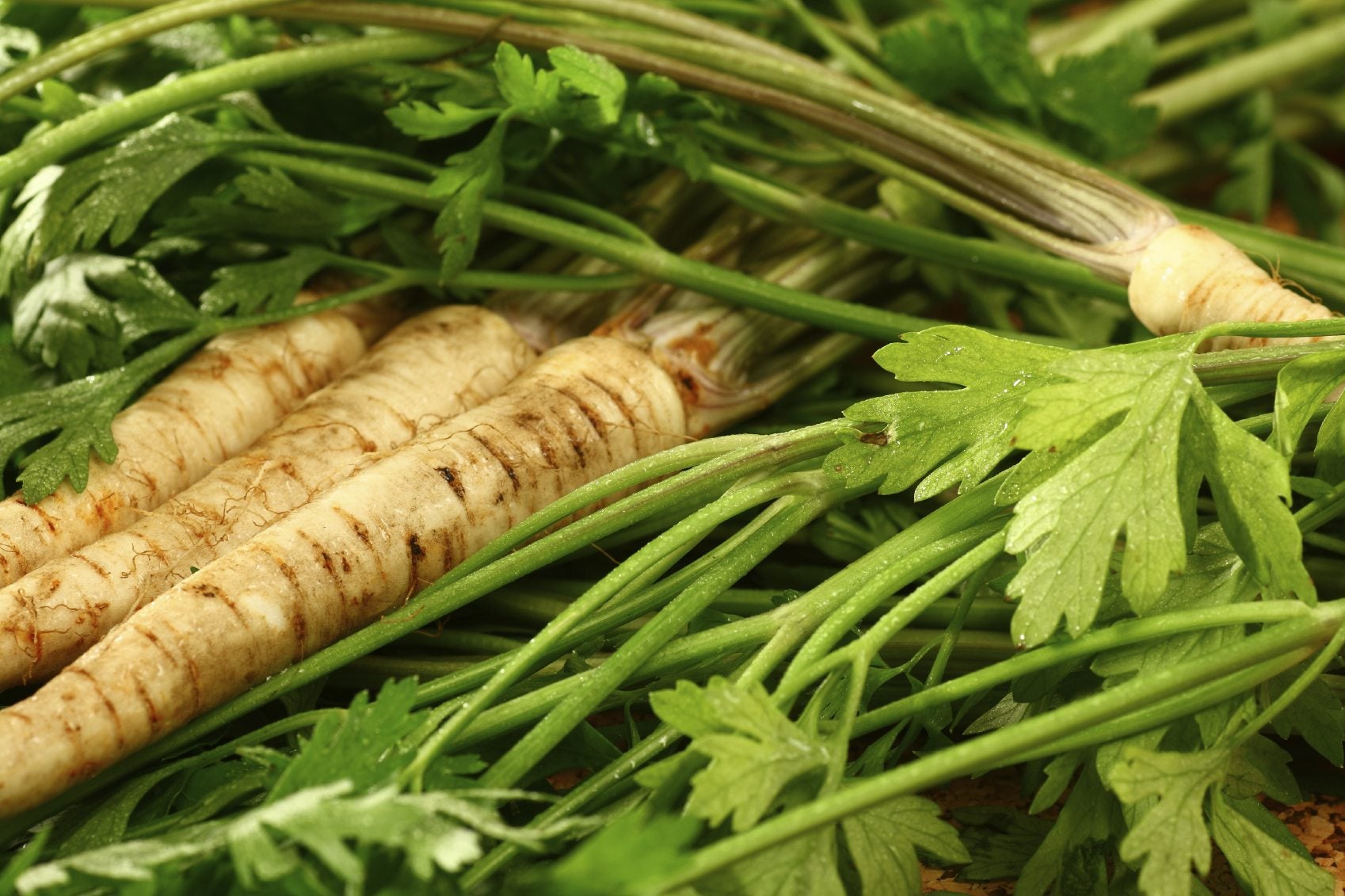What Is Parsley Root: Tips On Growing Parsley Root


Parsley root (Petroselinum crispum), also known as Dutch parsley, Hamburg parsley, and rooted parsley, shouldn’t be confused with the related leaf parsley. If you plant curly or Italian flat-leaf parsley expecting a big, edible root, you will be disappointed. If you plant parsley root, however, you’ll get a big, parsnip-like root, as well as greens, that can be harvested and regrown throughout the summer. Keep reading to learn more about how to grow parsley roots.
What is Parsley Root?
Though its root sets it apart, parsley root is indeed a variety of parsley. Parsley is a member of the carrot family, which goes a long way to explain its appearance. Although its root could be mistaken for a parsnip or a white carrot, its flavor is most similar to celery. Its texture is dry like a parsnip, however, and it can be cooked like one. The leaves are broader and tougher than those of herb parsley varieties, and their flavor is stronger and a bit more bitter. They’re great for garnish, or as an herb when you want a bold taste.
How to Grow Parsley Root
Parsley root plants can be grown from seed. The roots need a long growing season to develop, so start them indoors five to six weeks before the last frost date if you live in an area with hard winters. Germination can take as long as three weeks, so soak the seeds for 12 hours in warm water first to help it along. When your parsley root plants are 3 inches (8 cm.) tall, harden them off outdoors, then transplant them when all risk of frost has passed. In hot areas without frost, plant your parsley root plants during the cool season in autumn, winter, or early spring. Growing parsley root plants like rich, loamy soil and frequent watering. They can also be grown in containers provided they are deep enough to accommodate the long roots. Parsley root harvesting happens in phases. If you’re after the leaves, cut the outer stalks off at ground level to encourage new growth. Always leave the inner stalks in place. At the end of the growing season, dig up the entire plant and separate the stalks from the root. Store the root in damp sand or peat and freeze or dry the leaves.
Gardening tips, videos, info and more delivered right to your inbox!
Sign up for the Gardening Know How newsletter today and receive a free copy of our e-book "How to Grow Delicious Tomatoes".

The only child of a horticulturist and an English teacher, Liz Baessler was destined to become a gardening editor. She has been with Gardening Know how since 2015, and a Senior Editor since 2020. She holds a BA in English from Brandeis University and an MA in English from the University of Geneva, Switzerland. After years of gardening in containers and community garden plots, she finally has a backyard of her own, which she is systematically filling with vegetables and flowers.
-
 Terrifically Tubular Flowers For Hummingbirds: 9 Tube-Flowered Plants To Attract Hummers
Terrifically Tubular Flowers For Hummingbirds: 9 Tube-Flowered Plants To Attract HummersGrowing tubular flowers for hummingbirds helps you create the optimum feeding conditions for your winged friends. Here are nine tubed delights for hummers
By Tonya Barnett
-
 How To Grow Hydroponic Tomatoes For Fresh Indoor Harvests – No Soil Required
How To Grow Hydroponic Tomatoes For Fresh Indoor Harvests – No Soil RequiredLearning how to grow tomatoes in water is easy and allows you to harvest fresh-home-grown produce in every season without any mess.
By Ellen Wells